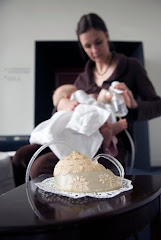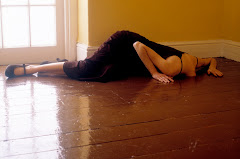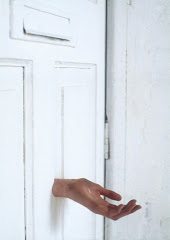Wednesday, 25 January 2017
Saturday, 29 May 2010
Welcome
Biography
Friday, 28 May 2010
Artist’s Statement April 2011
My past practice has been based around using my body to create installations that arise out of interactions with architectural structures and spaces. These interactions have manifested as live solo performances and also as a large body of photographic work.
It appears as if all or parts of my body have been fitted into the very fabric of a room or environment. Often my body is almost completely hidden within the recesses or constructed spaces found within a building: for example, the space under a floor or the flue of a chimney, with only part of my body visible, or I am squeezed into holes or gaps in the material structure - my physical contours against those of the architecture.
Through this work I have sought to question our understanding of the body and its environment, so that there appears to be a blurring of boundaries between the subject and the object, between built structures and the live bodily form. The performances “allow for the working of a kind of ‘sympathetic magic’ that ‘grows’ a complex hybrid web between flesh and architecture...this is not a case of symbiosis, there is never a blending between these two bodies that would require a third as a witness, but a continual swerving, borderlinking, oscillation.” (1)
In my most recent body of work, the “anchor series”, 2003-2007, I was commissioned to respond to a building or site in my own unique way; to seek out its hidden and unseen nooks and crannies and bring them to life. To become, in a way, the spirit of the building.
Since 2004, when my daughter was born, I have been producing work less intensely and my voyage into motherhood has informed and inspired me to now undertake a change in direction as an artist.
It is my intention to start a movement based research process, to explore material drawn from my recent home-life. I am particularly interested in how a child relates to and moves within space. I hope to record my past and present observations in various ways, including translations of a child’s movement or actions into my own adult physical language.
In the past, my work has been concerned with the positioning of the body and the blurring of boundaries of subject and object in architectural space, this has led more recently since becoming a mother, to exploring the maternal body as site itself. I am currently working with another visual artist who is also a mother, in a joint examination of our experiences of motherhood in relation to the body: how ones sense of self dislocates /relocates through the bodily experiences of pregnancy and breastfeeding a baby.
This collaboration has developed into the Mothersuckers Project, and 'Breastcups', a piece that combines performance, video and installation. The work plays in a humourous and ironic way with the breast as a container of many meanings; as a dual conduit of connection and separation between Mother and Baby, and extended within a social arena to challenge cultural norms.
“Breasts- like the women who “wear”-them can be deemed as both sexual and maternal.” The maternal body disturbs by accentuating this lack of a clear black or white distinction. “As an act of motherhood that is simultaneously exalted and abhorred, breastfeeding animates this notion of “binary terror”.” (2).













